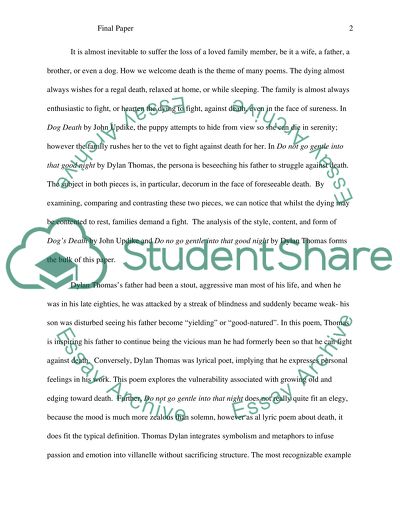Cite this document
(“Dog's Death by John Updike Essay Example | Topics and Well Written Essays - 1500 words”, n.d.)
Dog's Death by John Updike Essay Example | Topics and Well Written Essays - 1500 words. Retrieved from https://studentshare.org/literature/1448502-dogs-death-by-john-updike
Dog's Death by John Updike Essay Example | Topics and Well Written Essays - 1500 words. Retrieved from https://studentshare.org/literature/1448502-dogs-death-by-john-updike
(Dog'S Death by John Updike Essay Example | Topics and Well Written Essays - 1500 Words)
Dog'S Death by John Updike Essay Example | Topics and Well Written Essays - 1500 Words. https://studentshare.org/literature/1448502-dogs-death-by-john-updike.
Dog'S Death by John Updike Essay Example | Topics and Well Written Essays - 1500 Words. https://studentshare.org/literature/1448502-dogs-death-by-john-updike.
“Dog'S Death by John Updike Essay Example | Topics and Well Written Essays - 1500 Words”, n.d. https://studentshare.org/literature/1448502-dogs-death-by-john-updike.


